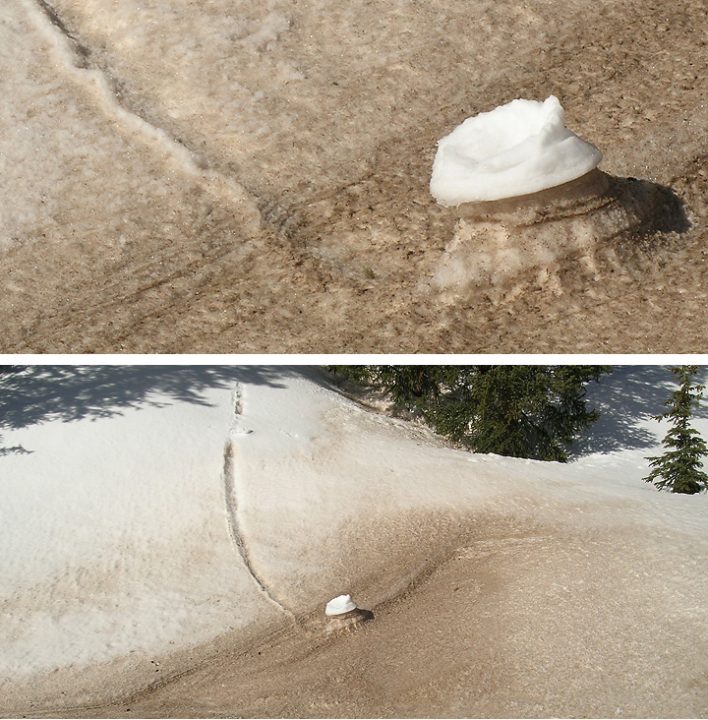When you think of spring skiing, what comes to mind? You might picture corn snow, zinc-covered noses and alpine starts. Sure, but what about dust?
Dust-on-snow events have become more common, and more commonly talked about, in recent years. Storms of fine particles reaching Colorado from the Southwest are settling on the snowpack this year, impacting runoff by darkening the snow surface and warming the snowpack.
That warming has several downstream effects, according to a recent Colorado Sun article, including changes in runoff, unpredictable streamflows, plants being exposed to sun earlier in the year and changing stream levels for boating and recreation. Susan Behery, hydraulic engineer for the Bureau of Reclamation in Durango, told the Sun, “So the severity of dust just really affects things. You never knew dirt could be so interesting, did you? People are like, ‘Dirt and dust. So icky.’”

Colorado isn’t the only Western state dealing with the dust problem. Rather than in Colorado’s mountains, which face pressure from dust in adjacent states, Utah’s Great Salt Lake represents a homegrown “great toxic Dustbowl,” as a February CNN article put it. As the lake’s water levels have dropped, hundreds of square miles of toxic soil have been exposed. The resulting dust poses significant health risks, adding toxins to the dust clouds that already inundate Salt Lake City, but it also threatens the “greatest snow on Earth” the Wasatch claims to have.
Lake-effect snow, created by wind moving across the Great Salt Lake, adds to the deep, light powder the Wasatch’s ski areas and ample backcountry terrain are known for. Lower water levels could diminish or even negate that effect. “Theoretically, there could be a tipping point at which the lake is too small of a size to create lake effect storms,” McKenzie Skiles, a University of Utah professor of geography, told The Deseret News in February. So, next time you’re looking for corn, keep an eye out for dust, a problem that could, in the future, greatly impact your spring skiing.










Excellent breakdown of the topic.